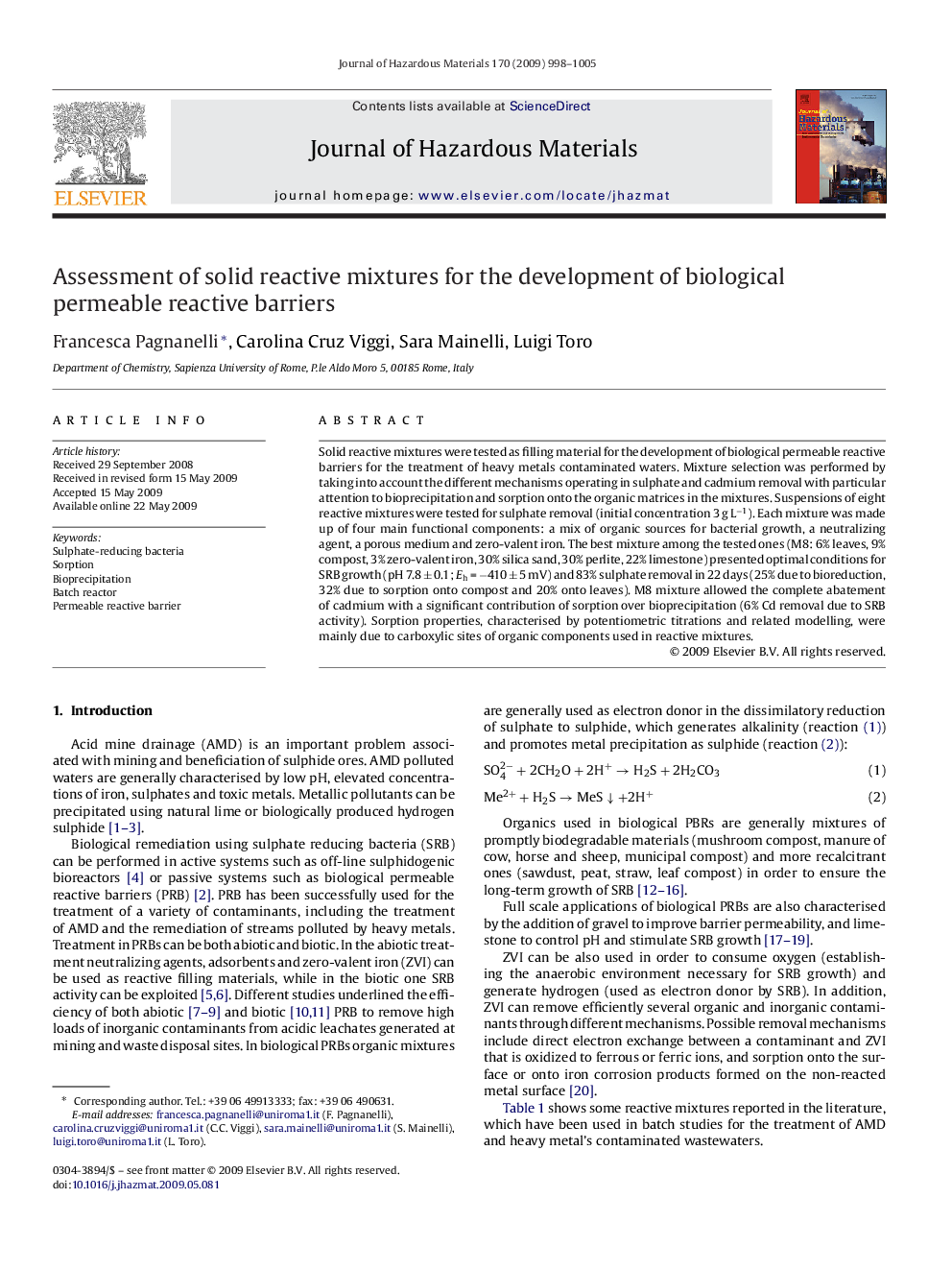| Article ID | Journal | Published Year | Pages | File Type |
|---|---|---|---|---|
| 581265 | Journal of Hazardous Materials | 2009 | 8 Pages |
Abstract
Solid reactive mixtures were tested as filling material for the development of biological permeable reactive barriers for the treatment of heavy metals contaminated waters. Mixture selection was performed by taking into account the different mechanisms operating in sulphate and cadmium removal with particular attention to bioprecipitation and sorption onto the organic matrices in the mixtures. Suspensions of eight reactive mixtures were tested for sulphate removal (initial concentration 3 g Lâ1). Each mixture was made up of four main functional components: a mix of organic sources for bacterial growth, a neutralizing agent, a porous medium and zero-valent iron. The best mixture among the tested ones (M8: 6% leaves, 9% compost, 3% zero-valent iron, 30% silica sand, 30% perlite, 22% limestone) presented optimal conditions for SRB growth (pH 7.8 ± 0.1; Eh = â410 ± 5 mV) and 83% sulphate removal in 22 days (25% due to bioreduction, 32% due to sorption onto compost and 20% onto leaves). M8 mixture allowed the complete abatement of cadmium with a significant contribution of sorption over bioprecipitation (6% Cd removal due to SRB activity). Sorption properties, characterised by potentiometric titrations and related modelling, were mainly due to carboxylic sites of organic components used in reactive mixtures.
Related Topics
Physical Sciences and Engineering
Chemical Engineering
Chemical Health and Safety
Authors
Francesca Pagnanelli, Carolina Cruz Viggi, Sara Mainelli, Luigi Toro,
